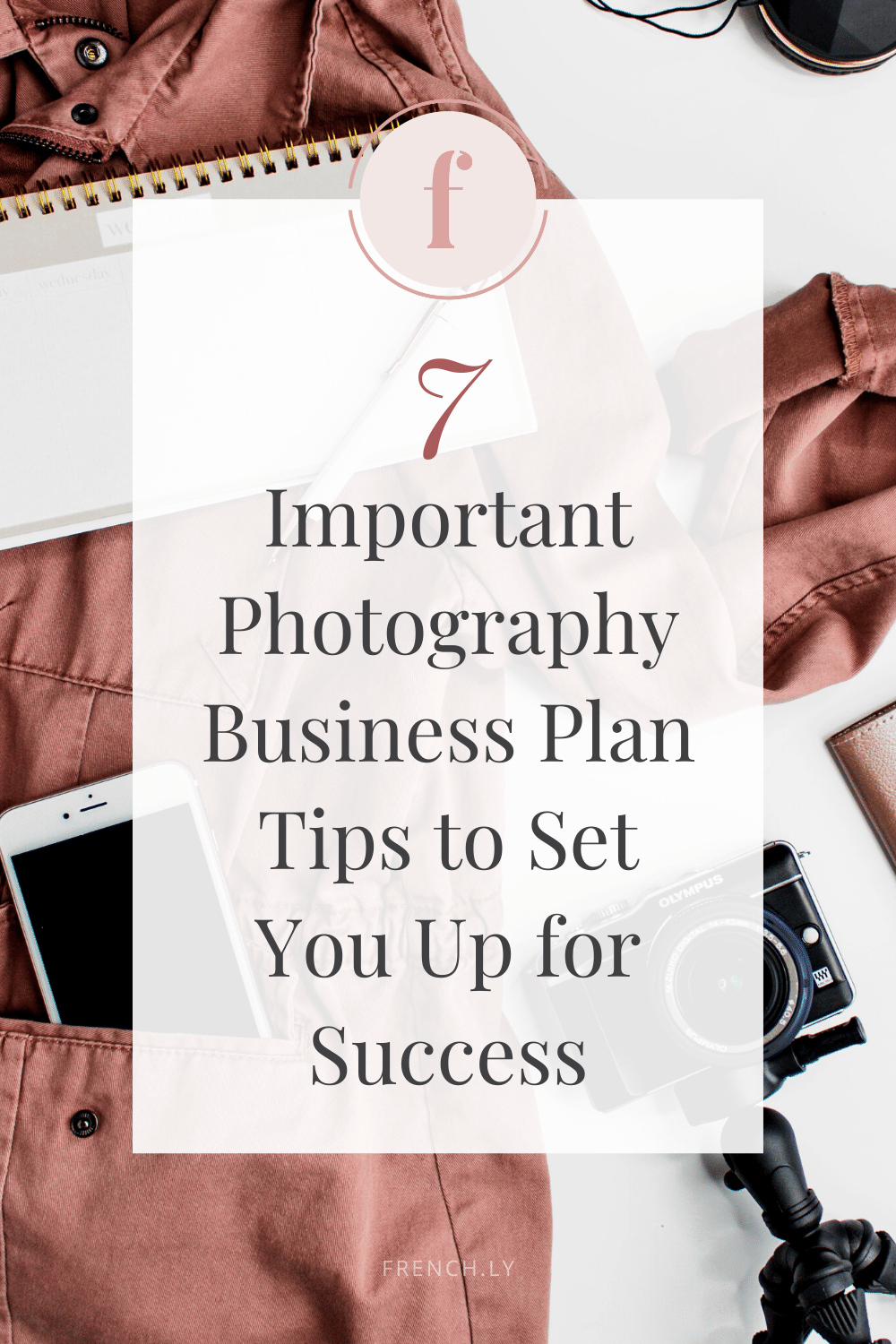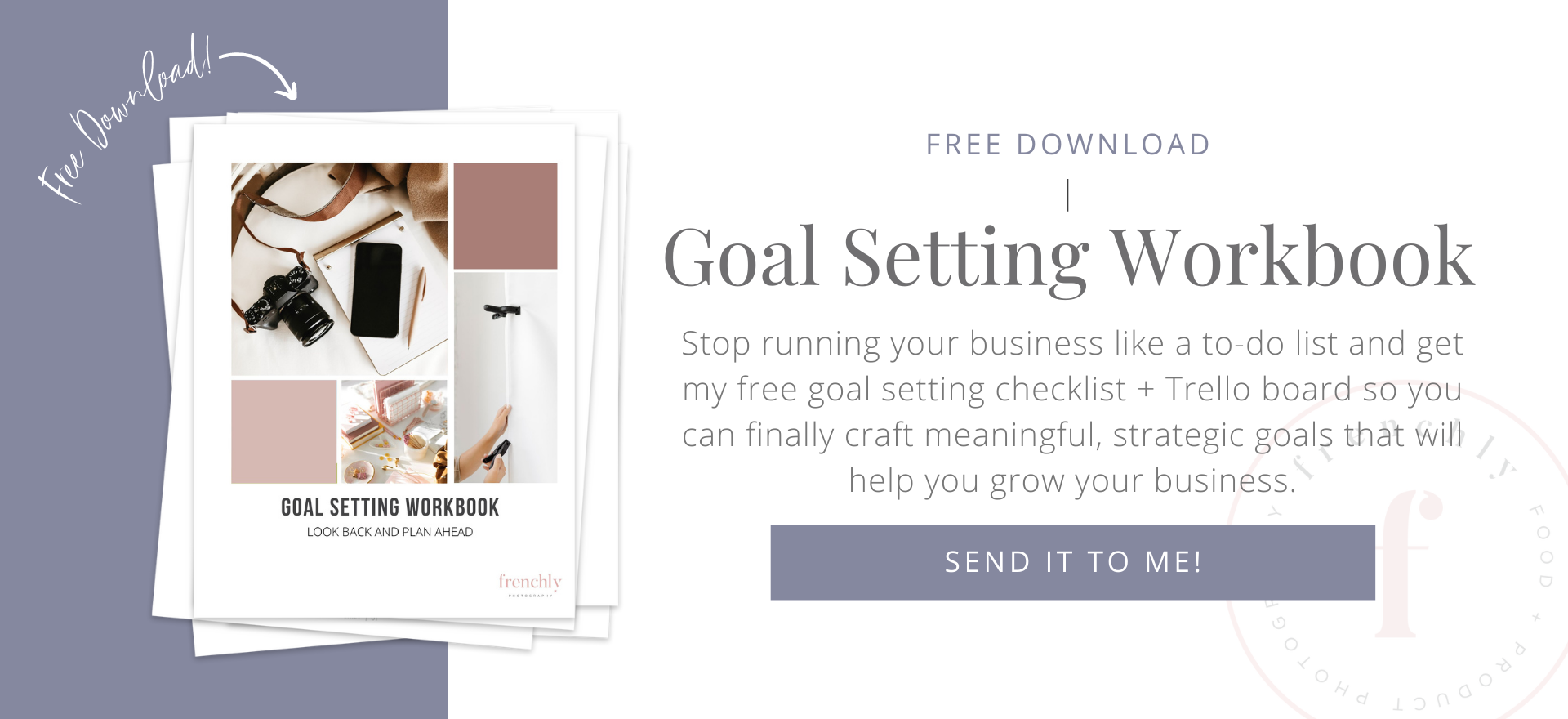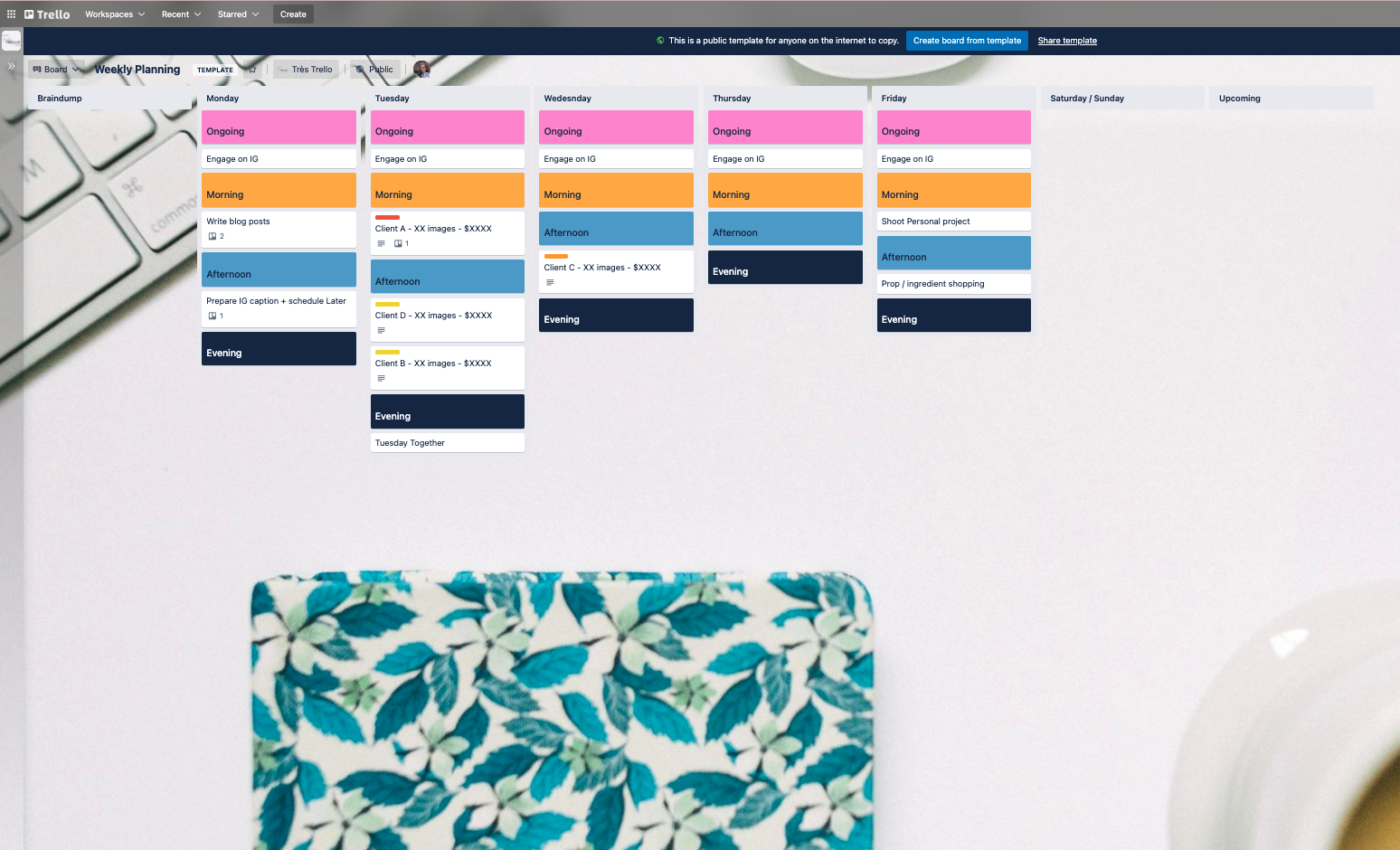In this guide, I show you how to choose who to pitch, how to find the right contact information, and how to craft a winning pitch.
PITCHING TO BRANDS AND IS THE BEST WAY TO GET YOUR IDEAL CLIENTS, AND YOU CAN DO IT WITHOUT FEELING ICKY
Gimme the Guide!
11 FOOD PHOTOGRAPHY DOCUMENTS EXPLAINED
Top Posts
11 PLACES TO SOURCE AFFORDABLE PHOTOGRAPHY PROPS AND BACKDROPS
30+ FOOD STYLING TIPS TO ELEVATE YOUR FOOD PHOTOGRAPHY
Free Resource
About Frenchly
I am a food + product photographer & educator specializing in eco-friendly and sustainable brands. When I am not working with clients, I empower creatives to start their journey by sharing my knowledge on the business of food + product photography.
7 Important Photography Business Plan Tips to Set You Up for Success
June 29, 2022
All successful businesses begin with a thoughtful plan. Resist the urge to suddenly jump ship from your 9 to 5 job and start doing what you love, living behind the lens. Before you embark on this worthwhile journey, you’re going to need a detailed photography business plan in place.
No matter how confident you are in your ability to find success as a professional photographer and business owner, you’ll get there faster with a photography business plan.

What Is a Photography Business Plan?
Your photography business plan should include all of the necessary steps you need to take in order to establish your brand and start making money. Believe it or not, it takes lots of time!
Create a thoughtful outline to ensure you don’t miss any important details or get ahead of yourself in the process.
For example, you might find yourself so excited by the prospect of shooting pictures all day long, you forget to set up your security fund or build your client pool. There are dozens of important components you could accidentally overlook if you act too hastily.
The best part of using a photography business plan to launch your business? Once you experience life with a plan, you’re apt to make more strategic decisions to run your business and continue to grow.
Why Is It Important to Have a Photography Business Plan in Place?
Imagine driving to a new place without directions (or good ol’ GPS navigation). How far could you possibly get?
Working without a photography business plan is like that. You may be able to get where you’re going (eventually), but you’re likely in for some painful bumps in the road and many wrong turns.
It’s important to lay out a photography business plan in order to move swiftly and efficiently towards your end goals.
Your business plan will help you:
- Visualize your future
- Measure achievement during each step of your journey
- Redirect your attention to what’s truly necessary (and next in line)
For some photographers, a business plan actually functions more like a business partner. It’s something to lean on when the going gets tough. And as an entrepreneur, you never want to feel stranded or unsure of your next move…so a photography business plan is essential.
7 Tips for Building Your Photography Business Plan
If becoming a professional photographer is the next big thing on your plate, you’re ready to formulate a photography business plan. Check out these seven helpful tips to start out.
Write a Clear Executive Summary With Your Mission Statement
First, take a few minutes to jot down exactly what you’re visualizing for your business.
Answer questions like what sorts of clients you’ll be serving and what subject matter will be your focus. Most importantly: What will make you stand out from your competition?
You don’t need to write a novel here—just a short paragraph or two is enough to get the ball rolling for your vision.
Determine the Business Structure that Works Best for You
You may not have considered your tax status when dreaming about your own business. But you need to have a general idea of how you’ll structure your business in order to properly (legally) begin working as a professional photographer.
As a photographer, it’s common to start off as a sole proprietor. But a general partnership would be more appropriate if you plan to share costs and profit with someone else. There are also different parameters for an LLC or an LLP! It’s important you consult with a lawyer before choosing your path.
Define Your Products and Services
Think about it: Do you want to shoot images for food brands, restaurants, products, or magazines? Where exactly do your talents and ambitions lie?
Decisions surrounding your service menu will help you refine your portfolio and eventually steer your online presence.
Think outside the box as you brainstorm! Perhaps your photography niche is showcasing farm-fresh food, but you also have a flair for shooting with livestock in the background. Maybe you want to incorporate educational opportunities for less experienced photographers or artistic children.
Identify Your Ideal Client
Erase the idea of “taking pictures for all in need” from your mind. Your talents are worthy of a more direct, targeted approach. Plus, your business will likely be more successful if you channel your marketing efforts towards specific, ideal clients.
You could hone in on niches like local artisans, startups, established brands, or restaurant chains. Consider how high-end or casual they are, too!
As you work on identifying your ideal clients, be sure to think about how frequently your ideal client will need your services. It might be totally glamorous to photograph the dinner menu for the five-star restaurant in town, but they may not require your services again for quite some time.
Decide How You’ll Market Your Business
A focused marketing plan tells people you exist! A successful photography business plan isn’t complete without a marketing outline geared to reach your target audience. In your marketing plan, you’ll set your budget and make sure you’re able to be consistent.
Consider what social media platforms will work for you—one or two maximum, at least when you’re first starting out. Brainstorm how often you’ll need to post and what groups you can potentially tap into for clients.
Develop your online portfolio, business website, and print whatever tools you need for handouts! (Plus, you’ll have to draft and rehearse your cold-pitch strategy.)
Pro tip: there’s no such thing as too much marketing prep! It helps to work on your web content and collect endorsements from any of your past clients before you launch.
Figure Out Your Finances
This step is crucial to make sure you’re not over-spending. Steer clear of thinking about how much profit you’re eventually going to make! Because you need to spend money before you make money.
Plan out what front-end expenses need to be taken care of before your business introduction. What software and equipment will you require to get jobs done?
It also helps to consider where you plan to work. If you anticipate most shoots being done on-site, you’ll need to pay for transport. If you plan on renting a studio or shooting in your home, you need to consider rent and property upkeep.
Related: How To Achieve Your Dreams By Avoiding These 7 Goal-Setting Mistakes
Build Your Pricing Structure
As a photographer working a creative job, I don’t recommend charging an hourly rate. Sometimes you nail your vision in the first five minutes! And you don’t want to be underpaid for doing your job too efficiently.
I also don’t recommend “package” pricing—remember, every project is different, and you’re going to need to tailor your pricing around specific details.
Instead, decide on a minimum creative fee or daily rate. Use your past experience to visualize how long your projects usually take and outline any caveats or overtime accommodations in your contracts.
Be sure to account for setup, materials, and travel in your pricing structure!
Related: 11 Things You Need to Include in Your Photography Contract
Other Major Things You Need to Think About
Readiness to start your career as an independent photographer goes beyond your photography business plan. You can also start thinking about these items (more casually) as you prepare to launch!
Create Your Unique Brand Identity
The most successful businesses have a unique tone, look, and feel that help them stand out to their audience. This is important because you want your clients to be able to recall your business name and appearance when they need you most.
For example, you need to choose your brand’s specific colors and fonts! You may want to design a memorable logo or catch-phrase, so even if your potential clients struggle to recall your exact name and contact information, they’ll be able to remember using other branding details.
Nail Down a Client Process While You’re Setting Up Your Photography Business Plan
Client processes consist of the tools and systems you plan to use for your business. You don’t want to arrive on-set, take a hundred pictures, then arrive back at your desk with no plan for how to get those images back to your client. Have a few strategies lined up, software installed, and workstation ready for all that’s to come.
For example, I use Trello to manage all of my projects (it’s a real life saver)! I use it for everything from keeping track of branding details to planning my weekly content (see below!).
And Pixieset is my favorite tool for sharing images and discussing project goals with my clients.
These and other efficiency tools help to shave valuable time off of each project so you can achieve work-life balance.
Carefully think through your perfect client photography process, step-by-step. Visualize yourself at a shoot and at your desk tackling your workload each day. What hours will you spend on marketing and corresponding? How do you plan to complete projects in an organized and timely manner?
Client experience means everything to the success of your business.
Developing a strong photography business plan is within your reach! Spend time thinking through and planning all the key sections. When every detail is set, you’ll be able to hit the ground running towards success.

Leave a Reply Cancel reply
| Created with Showit
| Design by Oregon Lane Studio
| Privacy Policy
© 2020 Frenchly Photography
Back to Top
THE WEBSITE
THE BLOG
Helping brands and businesses promote a happy, healthy and sustainable lifestyle through stunning food and product photography

